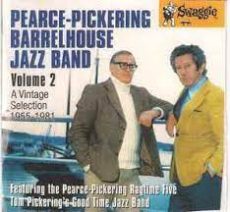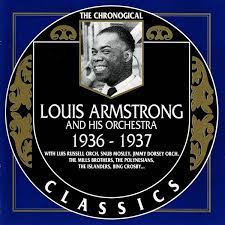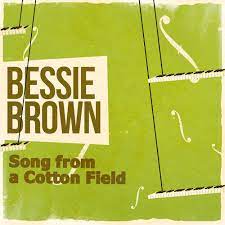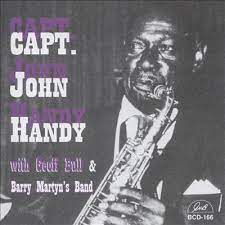
Daily Dose Of Jazz…
Jimmy Strong was born August 29, 1906 in Chicago, Illinois. As a teenage clarinetist he performed in Lottie Hightower’s Nighthawks. Around 1925, he did a national tour with a traveling revue and stayed in California for a time, freelancing with several groups.
Returning to Chicago he joined Carroll Dickerson’s orchestra, where he worked with Louis Armstrong, appearing on Armstrong’s Hot Fives recordings. In 1928, he also worked briefly with Clifford King. The 1930s saw him playing with Cassino Simpson, Zinky Cohn, and Jimmie Noone, as well as his own bands.
Around 1940 relocating to Jersey City, New Jersey he performed with local bands until his death. Clarinetist and tenor saxophonist Jimmy Strong transitioned in April 1977.
More Posts: clarinet,history,instrumental,jazz,music,saxophone

Daily Dose Of Jazz…
Thomas Mansergh Pickering was born on August 8. 1921 in Burra, South Australia, Australia. When the family moved to Australia’s island state of Tasmania from Burra in the mid-l930s and settled in the house next door to where Ian Pearce lived, the stage was set for the beginning of what was to become a significant part of Tasmania’s jazz history.
In his mid teens, he and Ian discovered British dance bands and over timethey embraced Benny Goodman, Louis Armstrong and the Swing Era musicians. Pee Wee Russell and Bud Freeman came later. At sixteen Tom received his first clarinet, doubling on saxophone and with his brother Cedri on drums, friend Ian playing cornet, pianist Rex Withers-Green, they gave birth to The Barrelhouse Four. He started playing in local bands and the four hit at local jam sessions. With the oncoming of WWII in 1939 they went their separate ways, reuniting in 1946 to record their first commercial pressing.
Pickering played traditional jazz in various parts of Australia during the late 30s and 40s. He continued working throughout succeeding decades, continuing his preference for older styles but also playing effective tenor saxophone in mainstream settings. His playing and recording career continued apace into the 80s, and his contribution to the musical life of his country has been rewarded with a number of honours.
Pickering went on to form his Good Time Jazz Band, which found success until the rising popularity of rock music led to the band’s eventual break up. A trio followed untilhe and Ian put together the Pearce- Pickering Ragtime Five. They had two very long and successful runs at the Tattersall’s Bar and Bistro, and then at Wrest Point Casino.
Ill-health led to Tom’s eventual retirement from music and the end of his playing career. Having qualified as a librarian in 1948, he would go on to work in the State Library of Tasmania, then became Parliamentary Librarian in 1974. He was made a member of the Order of Australia (AM), won the Australian Jazz Convention Composition Competition twice, and received the Satchmo Award.
Clarinetist Tom Pickering transitioned in Hobart, Tasmania on October 26, 2001.
More Posts: bandleader,clarinet,history,instrumental,jazz,music,saxophone

Daily Dose Of Jazz…
Leonard “Ham” Davis was born July 4, 1905 in St. Louis, Missouri and began his career in his hometown playing with the Odd Fellows Boys’ Band as a teenager and landing a spot in Charlie Creath’s band.
>Late in the 1920s, Ham relocated to New York City, where he played in the bands of Edgar Hayes and Arthur Gibbs. His first recording was with Eddie Condon’s ensemble in 1929, and then he sat in with McKinney’s Cotton Pickers that same year. In the 1930s he played with Benny Carter, Don Redman, and Elmer Snowden, and did a two-year stint in Louis Armstrong’s orchestra starting in 1935.
Toward the end of the decade he toured Europe with Edgar Hayes and played in the Blackbirds revue in New York City. Davis joined Sidney Bechet’s revival group in 1940, and also played in bands led by Maurice Hubbard, Albert Socarras, and George James. He continued performing in small-time settings in New York through the mid-1950s.
Trumpeter Ham Davis transitioned in 1957.
More Posts: history,instrumental,jazz,music,trumpet

Daily Dose Of Jazz…
Edward Anderson was born on July 1, 1910 in Jacksonville, Florida. He began playing trumpet at age ten, taking his first lessons with the bandmaster at Florida State College. At 15 he went to St. Emma College in Belmead, Virginia\ and was principal trumpet in the college band.
He played with Luckey Roberts at the Everglades Club in Palm Beach, Florida and traveled to New York City with him in the spring of 1926. Roberts introduced Anderson to Clarence Williams, who began using him on recordings. He recorded with blues and jazz singer Bessie Brown on her album Song From A Cotton Field in that year. During the period between 1927-28, Anderson worked with drummer George Howe and Luis Russell at the Nest Club, and with Jelly Roll Morton at the Rose Danceland.
1929 saw Ed subbing for Louis Armstrong at Connie’s Inn while Armstrong was in the revue Hot Chocolates. He played with Benny Carter at the Arcadia Ballroom, Charlie Johnson, and Bingie Madison, then joined The Mills Blue Rhythm Band from 1930 until mid 1934. He later played in Charlie Turner’s Arcadians, then joined Hazel Scott’s big band early in 1939.
After a stint with Frankie Newton’s band at the Mime Club in New York in 1941 he left fulltime music. Eventually Ed Anderson, who often went by Andy, gave up the trumpet, but maintained a residence in the city. The date of his death is unknown at this time.
More Posts: history,instrumental,jazz,music,trumpet

Daily Dose Of Jazz…
Captain John Handy was born on June 24, 1900 in Pass Christian, Mississippi. His father, John Handy Sr., had a family band that included two of his brothers, Sylvester and Julius. Although he also played guitar, mandolin, and drums at an early age, he chose reeds to develop his professional musical career, beginning with clarinet and then migrating to saxophone.
He moved to New Orleans, Louisiana in 1915 and during the 1920s played clarinet working with Kid Rena and Punch Miller. He switched to alto saxophone in 1928. From the early 1930s he led the Louisiana Shakers with his brother Sylvester, and toured throughout the South. In the latter 1930s Handy worked with Charles Creath in St. Louis, Missouri.
Captain John returned to New Orleans in the 1940s, where he performed with the Young Tuxedo Brass Band. Handy was interviewed several times for the Hogan Jazz Archive at Tulane University in New Orleans in the late 1950s and early Sixties. During the 1960s, he played with Kid Sheik Cola and the Preservation Hall Jazz Band and recorded for GHB, RCA, and Jazz Crusade.
Alto saxophonist Captain John Handy, who was part of the New Orleans jazz revival, transitioned in New York on January 12, 1971 at the age of 70.
More Posts: bandleader,clarinet,history,instrumental,jazz,music,saxophone




